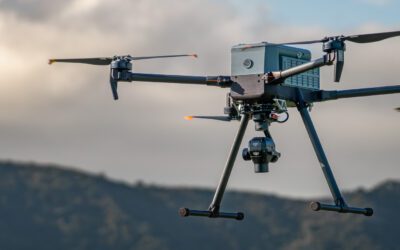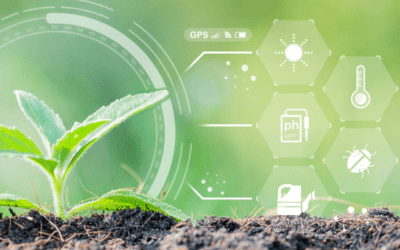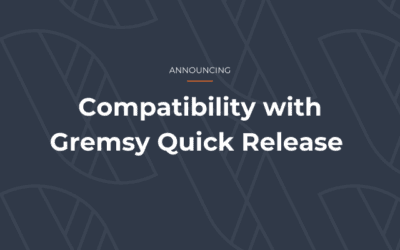Worries of human error and questionability don’t stop at data planning and capture – there is plenty of room for the two in data analysis as well. As questions swirl around whether the data is accurate or if it should be used in decision-making, technology gets the opportunity to step up as a solution to these problems.
And machine learning has provided a significant opportunity for the agriculture industry in terms of data analysis. We already see versions of machine learning in our everyday lives – from shopping suggestions to autonomous machinery – so why not leverage it to make data analysis faster and more accurate?
While agricultural modeling isn’t new, using machine learning to validate crop health and performance offers a new perspective.
Agricultural Modeling: The Role of Machine Learning
Early versions of agricultural modeling can be traced back to the beginning of the 1900s. During this time, modeling focused predominantly on regression models to understand how soil, plants, and the atmosphere processes were linked.
Just like the practice of agronomy, modeling in agriculture has evolved significantly since then. This is partially due to the fact that there is more research and understanding of the different biological processes but also because of advancements in technology, such as the advent of machine learning. This has transformed how models can be created and used to power critical decisions for agronomic leaders.
What is a model in terms of the machine learning framework? It can be summed up as simply as using one feature or independent variable to estimate a response or dependent variable. So, evaluating weather and understanding how changes in growing degree days will impact a crop’s growth, maturity, and vigor throughout the season. Of course, this can be done today with access to the internet and Excel (or even a dog-eared copy of the Farmer’s Almanac).
Machine learning adds a layer of speed, accuracy, and precision that cannot be captured via other means. It is like rewriting the Farmer’s Almanac with data specific to you and how your environment has changed over time. We are so used to only visualizing in two or three dimensions, that the 10, 20, or even 100 features provided by machine learning are mind boggling. Imagine how transformative these advanced dimensions are when putting together the big picture.
Agricultural modeling can be leveraged to evaluate the past, inform the present, and predict the future. At its core, it helps to identify predicted outcomes by using the available data to inform these predictions. Estimates show that each farm generates at least 500,000 data points per day – with so much data being collected and external factors to consider, it can be difficult to determine relationships between those factors (in the simplest terms – focusing on causation versus correlation) and how to leverage those to build predictions and solutions.
Retrospective Analysis: A Lookback at Performance
Agriculture modeling offers versatility to help researchers and product developers to get to the answer they seek – and this may be at different points in time. When new data is coming in, there is no guarantee that someone has time to drop everything and analyze it (especially during the growing season).
Since machine learning is a data-driven process, the opportunity for retrospective analysis frames the problem as if it were being solved at “crunch time” but at the convenience of completing it during the off-season.
For many, historical modeling serves as a starting point to understand how a machine learning framework can work to uncover outcomes while identifying areas of focus. Creating a historical model involves the use of proprietary data during a period of time. This may span several seasons or decades to help derive variations and inform decisions.
This data will train a model to evaluate what could happen if using in-season data. History is the best predictor of the future. Starting here, it takes existing data and starts to explore different elements that happen from season to season, identifying where there may be gaps and the factors that may have contributed to them.
While it can’t change the seasons used for the analysis, it can indicate what happened to result in those outcomes – and inform decisions in future seasons.
For those exploring agricultural modeling, this is often the starting point. It’s easiest to pull data points from previous seasons and build a model on those, helping to showcase what the results would be – all while validating against what really happened. And if it worked? There’s a model built to inform in-season work.
One quick note about proprietary ground-truth data – for many industries, proprietary data doesn’t carry the same weight as it does in agriculture. Ultimately, this data is the core of the product itself in agriculture. When Sentera works with customers for agronomic modeling, proprietary data stays proprietary – Sentera does not use ground truth data as input to model across different customers.
In-season Modeling: Using Technology to Inform Inputs
Because plants are constantly changing and growing, one of the biggest challenges for capturing data in season comes from getting it at the right time. Time is the biggest barrier for data collection, as you only have a short window to get the data you need to capture before it changes again.
What if you didn’t have to visit plots or fields in person to take measurements to make these decisions? What if you could use maturity data to inform what has happened yet?
It doesn’t mean that you stop collecting data; rather, it means that you rely on other types of data (and often, data that is more reliable).
Let’s put this into more specific terms. As a seed researcher focused on breeding, your first goal is to identify which breeding lines will make it through the research trial and advance to the next stage of product development. To do so, you need to understand what is happening in your plots at any given time – something that can be challenging if you are running hundreds, if not thousands, of plots at one time. The goal? Identify the maturity data for the plants and the associated vigor at that time.
Enter an in-season agricultural model, designed to use the data that’s readily available to help inform decisions. This starts by using management data, such as planting or application records. It continues by using remote sensing, so you don’t have to have a human go to every plot. It could even include
Flight Services – where you rely on an external team to fly a drone over your plots to capture the data you need.
And from there, the model spits out the results regularly, refining the maturity data based on the most recent snapshot of available information. Using this data, paired with other essential information (e.g., weather data, soil or tissue samples, key inputs, etc.), researchers can spend their time focusing on making their most important decisions rather than chasing down the measurements they need to come to those conclusions.
Predictive Modeling: Power Future Decisions
The pinnacle of agricultural modeling? Predictive models that can, based on early-season information (like emergency rates and uniformity), give precise spatial and temporal context about what is expected to happen next based on the unique environment of the current growing season.
Of course, it wouldn’t be as simple as that. Every season brings its own curveballs, meaning that the model would have to re-evaluate data at several points during the season – or after one of these significant weather events – and provide insight into inputs.
Agronomic modeling’s ability to dynamically adjust to the management and environment of the current season has been revolutionary. With the unpredictability and uncertainty that we are all familiar with, leveraging flexible technological advancements (like modeling) assists in overcoming outside factors.
But it would eliminate a lot of questions during the growing season – all while validating that the best outcomes are to come based on the measures taken within the field.
The Future of Data in Agriculture
Getting access to data isn’t a problem in agriculture – it’s collecting data at scale without sacrificing accuracy and precision that brings challenges. And then after the data is collected, organizing and formatting the data in the way needed for interpretation.
Just as agricultural modeling has transformed over the past century, so have our data collection processes. Remote sensing has removed the challenge of understanding how every plant performs and provides more insight into crop health.
Teamed with other key data points, like weather information, soil tissues and samples, and input analysis, there is a way to tell a story about the season. It just requires a technological layer to help translate the information into useful data.
And while modeling may already be a century old, this is just the beginning! But even so, today’s agricultural modeling has experienced significant advancements since the advent of remote sensing – helping to predict and validate outcomes to fuel agronomic decision-making. The internet and cloud computing have drastically transformed the landscape of using modeling as a predictive decision support tool – when it was previously limited to just understanding phenomena.







0 Comments